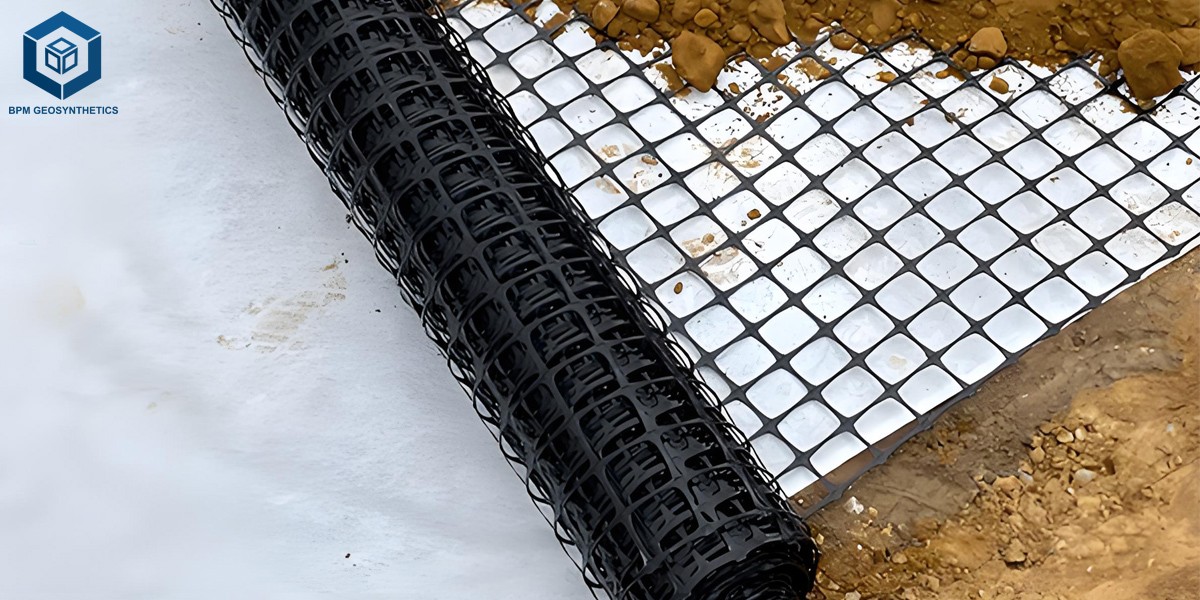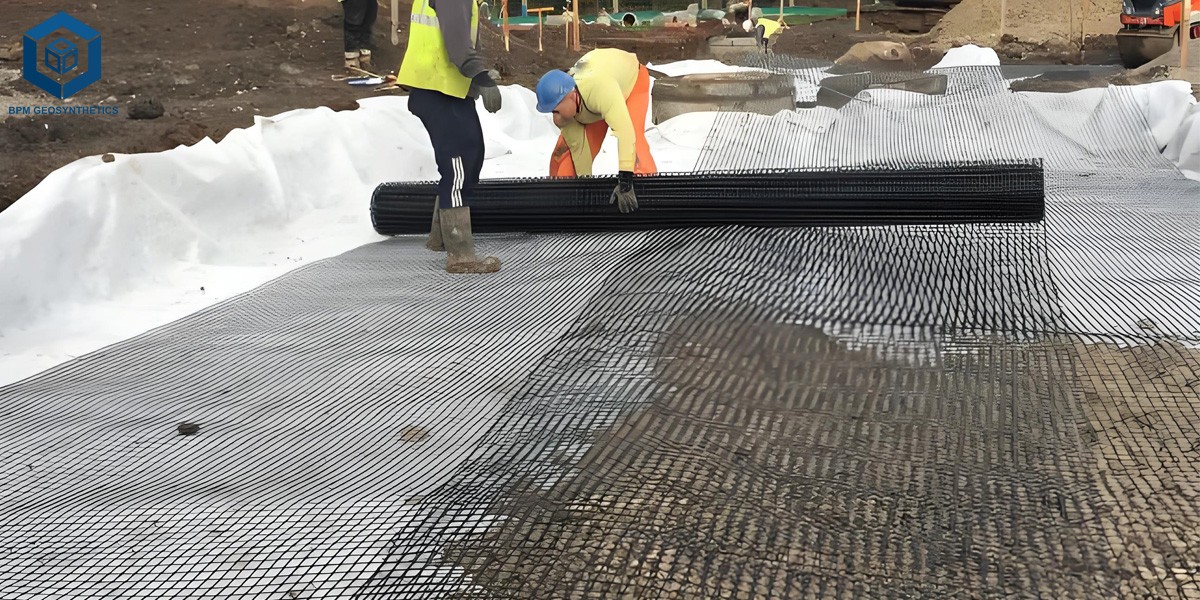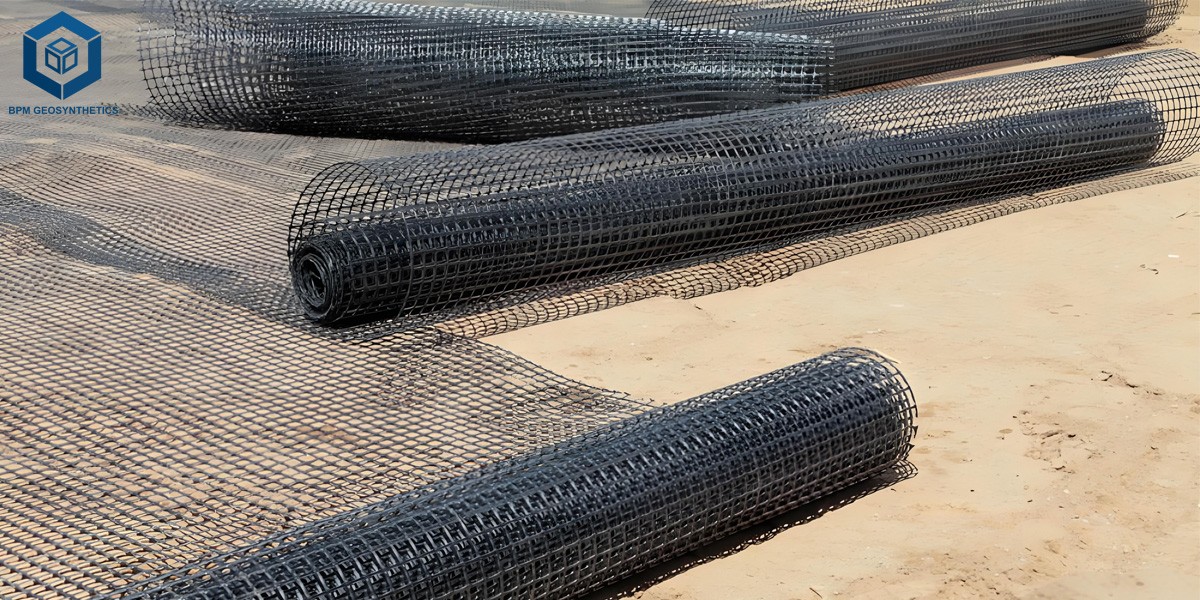What Are Advantages of Geo Grid Mesh?
Geo Grid Mesh, a geosynthetic material, has emerged as a transformative solution in civil engineering and environmental projects. Its unique properties—such as high tensile strength, durability, and eco-friendliness—make it indispensable for reinforcing soil, stabilizing infrastructure, and promoting sustainable development. This case study explores the advantages of Geo Grid Mesh through real-world applications, technical insights, and environmental benefits.
1. What is Geo Grid Mesh?
Geo Grid Mesh is a high strength geosynthetic material designed to make stronger soil and enhance floor stability. Made from polymers such as polypropylene (PP) or high-density polyethylene (HDPE), it points a grid-like shape that interlocks with soil, gravel, or different base materials. This geogrid mesh is extensively used in civil engineering and development initiatives to decorate load distribution, minimize soil erosion, and beef up embankments, roadbeds, and preserving walls. BPM Geo Grid Mesh provides exceptional tensile strength, durability, and resistance to chemical substances and UV exposure, making it an perfect answer for long-term reinforcement in difficult environments.
2. What Are Advantages of Geo Grid Mesh?
2.1 Geo Grid Mesh Enhanced Soil Stability and Load-bearing Capacity
Geo Grid Mesh is primary function is to reinforce weak soils and distribute mechanical loads evenly. By interlocking with soil particles, geogrid prevents lateral movement and reduces differential settlement. For example, in a highway construction project in Turkey, engineers used Geo Grid Mesh to stabilize a soft clay subgrade. The geogrid mesh distributed wheel loads across a wider area, reducing vertical stress by 40% and eliminating the need for thick aggregate layers. This resulted in a 30% cost savings on materials and a 20% reduction in construction time
In the Guian Avenue bridge abutment project in Guizhou, China, the application of geogrid mesh demonstrated a remarkable 63.5% increase in foundation bearing capacity and a 45% reduction in settlement compared to traditional methods . The project, which involved high-fill subgrade construction in a mountainous terrain, utilized a multilayered geogrid reinforcement system. The grid’s tensile strength (up to 80kN/m) distributed vertical loads horizontally, reducing stress concentration and preventing soil displacement. This mechanism was validated through plate load tests, showing that the geogrid-stabilized soil could withstand 1.6 times more load before failure .
Similarly, in the Weijiu Road widening project, steel-plastic composite geogrids were used to address differential settlement between new and old roadbeds. The grid’s high-modulus steel wires (tensile strength>100kN/m) constrained lateral soil movement, decreasing longitudinal cracks by 70% and extending the road’s service life by 5–8 years . The interlocking effect between the geo grid is apertures and soil particles created a "composite structural layer," enhancing the subgrade’s by 40%.
2.2 Geo Grid Mesh Durability in Extreme Environments
By mitigating soil movement, Geo Grid Mesh extends infrastructure lifespan. A railway project in Australia used the geo grid wall mesh to prevent ballast displacement. Post-installation monitoring showed a 70% reduction in track deformation, ensuring safer operations and reducing maintenance frequency
- UV Resistance: Withstands 20+ years of sunlight exposure.
- Chemical Resistance: Unaffected by oils, fuels, and pH variations.
In Xinjiang’s desert regions, where temperatures fluctuate between -30°C and +50°C, geogrid-reinforced retaining walls showed minimal degradation after three years of service. A model test conducted by Xinjiang Construction Science Research Institute revealed that wind-sand filled walls reinforced with UV-stabilized plastic geogrid had a creep deformation rate of less than 0.5% per year, outperforming traditional concrete walls by 300% in harsh climates . The grid’s polyethylene material, treated with anti-oxidants, resisted photodegradation, maintaining 90% of its tensile strength after 1,000 hours of UV exposure .
2.3 Geo Grid Mesh Versatility in Composite Applications
Combining geogrid with other geosynthetics enhances multi-functional performance. In a riverbank protection project in Guangxi, a composite system of biaxial geogrid and nonwoven geotextile improved soil shear strength by 55% while maintaining drainage efficiency. The geotextile filtered sediment (retention rate >95%), preventing grid clogging, while the geogrid restricted slope displacement, reducing erosion by 80% during heavy rains .
In waste landfill engineering, HDPE geogrid paired with geomembrane created a robust anti-seepage barrier. A case in Shanghai showed that the grid reinforced geomembrane system had a puncture resistance of 2.8kN, 3 times higher than unreinforced membranes, while the grid’s drainage channels reduced pore water pressure by 60%, minimizing the risk of landfill slope failure Geo grid mesh is adaptable to various engineering needs, including:
- Geo Grid Mesh for Roadways and railways – Reinforces subgrade layers.
- Geo Grid Mesh for Embankments and retaining structures – Provides lateral support.
- Geo Grid Mesh for Landfill liner and drainage systems – Enhances filtration and stability.
2.4 Geo Grid Mesh Environmental Sustainability
Geogrid technology aligns with green construction principles by reducing material consumption and promoting recyclability. The glass fiber geogrid, made from inorganic silica, is 100% recyclable and emits 50% less CO₂ during production than steel grids. In the Beijing-Tianjin-Hebei expressway network, using 200,000m² of recycled glass fiber grids saved 1,200 tons of steel and reduced energy consumption by 1.8 million kWh .
Moreover, geogrid reinforced slopes enable vegetation growth, improving ecological stability. A highway project in Yunnan used biodegradable polypropylene geogrid for slope protection, with grass roots penetrating the grid’s 10mm apertures to form a cohesive green barrier. After two years, the reinforced slopes showed 90% vegetation coverage, compared to 30% on conventional concrete slopes, significantly reducing soil erosion .
Geo grid mesh is an essential material in modern civil engineering, offering soil stabilization, cost efficiency, erosion control, and environmental sustainability. Its ability to reinforce weak soils and distribute loads makes it indispensable in infrastructure projects. As construction techniques evolve, geo grid mesh will continue to play a vital role in building durable and eco-friendly structures.
3. Why Choose Geo Grid Mesh Over Conventional Solutions?
In the subject of civil engineering and infrastructure development, the desire of reinforcement material performs a essential function in identifying structural performance, challenge cost, and environmental impact. Geo Grid Mesh has unexpectedly received reputation as a modern-day choice to common reinforcement techniques such as concrete protecting walls, steel reinforcements, and thick mixture layers. The contrast under highlights the key variations and advantages.
3.1 Geo Grid Mesh vs Conventional Solutions Structural Efficiency
Traditional strategies frequently count on inflexible substances like bolstered concrete or metal bars to furnish help and stability. While these substances provide excessive compressive strength, they lack flexibility and are inclined to cracking or failure below dynamic or differential loading. In contrast, Geo Grid Mesh works by means of reinforcing the soil itself, forming a composite gadget the place the load is evenly dispensed throughout the structure. This interlocking mechanism affords higher adaptability to floor movement, lowering the hazard of structural failure.
3.2 Geo Grid Mesh vs Conventional Solutions Installation Time and Cost
Concrete partitions and deep basis structures require enormous labor, specialised equipment, and prolonged curing times. These procedures are no longer solely time-consuming however additionally expand typical mission costs. Geo Grid Mesh, on the different hand, is lightweight, convenient to transport, and can be established rapidly with minimal equipment. It eliminates the want for thick subgrade layers or high-priced fill materials, ensuing in value financial savings of up to 30–40% in avenue or embankment projects.
3.3 Geo Grid Mesh vs Conventional Solutions Environmental Impact
Traditional reinforcement substances such as metal and concrete have excessive carbon footprints due to energy-intensive manufacturing processes. Additionally, large-scale excavation and fabric use can lead to environmental degradation. Geo Grid Mesh helps sustainable building by using lowering uncooked cloth use, enabling recycling, and aiding vegetation increase on slopes. Biodegradable and recyclable versions similarly decrease long-term ecological impact.
3.4 Geo Grid Mesh vs Conventional Solutions Performance in Harsh Conditions
Steel reinforcements are inclined to corrosion in acidic or marine environments, whilst concrete can deteriorate beneath freeze-thaw cycles or chemical attack. BPM Geo Grid Mesh, made from UV-stabilized PP or HDPE, presents gorgeous resistance to chemicals, temperature fluctuations, and long-term weathering. It keeps over 90% of its tensile electricity after extended publicity to harsh climates, making sure a longer carrier lifestyles with much less maintenance.
3.5 Geo Grid Mesh vs Conventional Solutions Design Flexibility
Traditional buildings frequently require customized molds, heavy foundations, and inflexible layouts. Geo Grid Mesh affords engineers with higher graph freedom. It can be layered, curved, or mixed with geotextiles to swimsuit site-specific challenges, such as tender soils, steep slopes, or limited spaces. Its modular format permits phased building and effortless integration into current infrastructure.
Conclusion: While ordinary reinforcement techniques nevertheless have unique uses, Geo Grid Mesh presents a extra efficient, adaptable, and environmentally accountable answer for cutting-edge infrastructure challenges. By lowering fabric usage, shortening development time, and enhancing long-term performance, BPM Geo Grid Mesh represents a next-generation method to soil stabilization and structural reinforcement.
4. Summary
The advantages of geogrid mesh from mechanical reinforcement to environmental stewardship position it as a cornerstone of modern civil engineering. Its ability to transform loose soil into a structured composite, withstand extreme conditions, and enable sustainable construction makes it indispensable in projects ranging from high-speed railways to ecological restoration. As infrastructure demands grow, geogrid technology will continue to redefine the boundaries of efficient, resilient, and green engineering.
As geogrid mesh manufacturer of BPM Geosynthetics already developing more than 20years , BPM always been committed to the productions , research and development , sales and service of geotechnical materials . with high quality products and professional sales and after sales teams .BPM Geosynthetics has passed the ISO9001 quality management system , ISO14001 environmental management system , ISO45001 occupational health system certification , and passed Soncap , SAAO and BV certification and SGS and intertek tests , BPM Geosynthetics have reached the world leading level . can widely used in aquaculture soil erosion resistance .drainage systems , mining etc . BPM are willing to become your partners with high cost performance , innovative geogrid mesh and geosynthetic products , excellent quality and perfect after sale service , join BPM , win our future.






